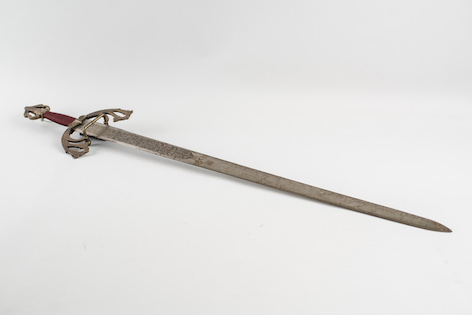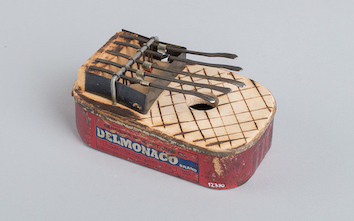
News
The everyday object turned into a musical instrument
We start from the idea that all objects can make music but not all are musical. The percussive sound of beating eggs or closing a door does not become music per se (although it could if it were part of a contemporary musical composition, right?). Music is the will to generate certain rhythms and melodies, usually to communicate, to ritualize acts and give them value. They are transformed into music when we place some of these sounds within a situation that in our culture we consider musical.
On the other hand, when musical instruments as we now know them did not exist, body percussion or the strucking of sticks or stones exercised the function of an instrument, in fact, this function was specifically granted, an added value. And later, when there has already been a production of increasingly technologically evolved musical instruments, it has allowed us to separate, for example in the Museum, the instrument exclusively for musical dedication from the rest of the objects. But are we sure?
You don't always have an instrument within reach and you need to sharpen your imagination to find elements to replace them, each one will do it with whatever is nearby: some wooden spoons, an elastic band, a bottle of anise...
Some examples can be found in the Museum, such as these:
- washboard: designed to wash clothes, Africans begin to use it to accompany the juba dance, also with bottles and spoons and, step by step, was redesigned and arrived to the United States where thimbles were used to scrub or hit creating various percussion sounds, which often accompany styles such as folk, zydeco, jazz or blues.
- scissors: we talked about them in this post, on how in some places scissors are used to mark rhythms and, depending on how it is struck and what the overture is like, one or the other sounds are created.
- sword: it seems strange to have a double-edged sword in a musical instruments museum, but it has been documented that in places like Toledo they used it by hitting the blade with a small metal bar to generate sounds or, in Ibiza, the espasí, it accompanies many traditional dances, it is not exactly a sword, although the shape reminds us of it (although the white weapon would be its origin).
- glass harp: surely we have all played at some point after a meal to hit the glasses or the cups on the table with a teaspoon, surprised to see how different notes are generated according to the volume of liquid they contain. Perhaps this was also how Richard Pokrich discovered it, when invented in the year 1741 what he would call the angelic organ and which we know as glass harp.
- shaving machine: they are not ordinary shavers, but were used to scrape out wax cylinders. That is, a wax cylinder, of the natural beeswax kind, had a life of about 25 reproductions, once made, they could be returned to the shop, where the grooves were scraped to re-record new music. A totally ecological idea!
- tin: sansas are simple instruments, which consist of wooden board, a resonator and various metal or wooden tines, in some cases we will see that the resonators are made with tin cans and, tines, with spoons or knife blades.

And out of the museum we can see another examples:
- spoons: can be made of wood or metal, with a functioning very similar to that of the castanets, this culinary tool converted into a percussion instrument can be found in the folk music of America, England, Canada, Greece, Russia, Turkey or Spain, in this video we can see how they sound.
- btle of anise: Anís del Mono’s bottle is known, among other things, for its design. The striations on the glass, which the manufacturer copied from a perfume bottle in Paris, allow it to be scratched and create all kinds of rhythms.
- typewritter: perhaps the most unusual musical object, it gained relevance when Leroy Anderson composed a song as a soloist, The typewriter, that we can listen in the original version recorded in 1953.
- musical saw: outside of cutting down trees, it can be played with a bow and, as it is bent, it produces different notes.

Outside the museum we also find musical groups that base their musical instruments on everyday objects in the key of recycling, too: from the group Les Luthiers to the Orchestra of Recycled Instruments of Cateura or Xavier Lozano, we would find hundreds of examples made with all kinds of materials, from elastic files or cords to plastic tubes, cigar boxes, etc.
In this way, there are everyday objects designed to be functional that, in some social gatherings, in the absence of musical instruments, gain added value and are part of the musical event.

